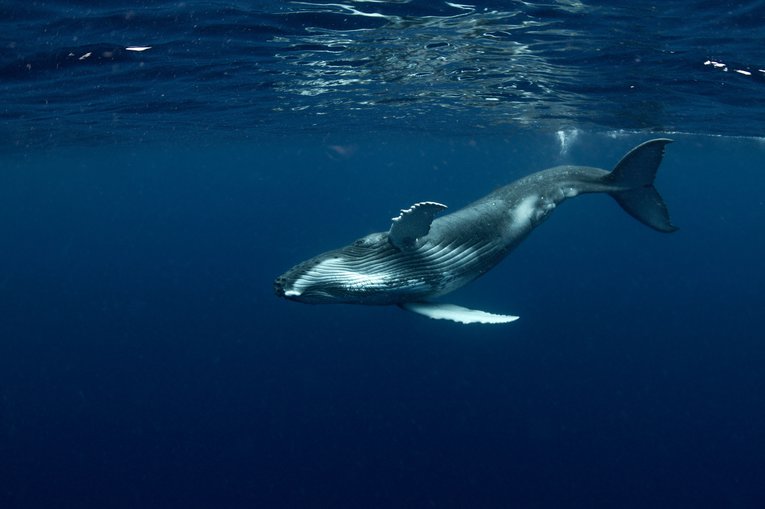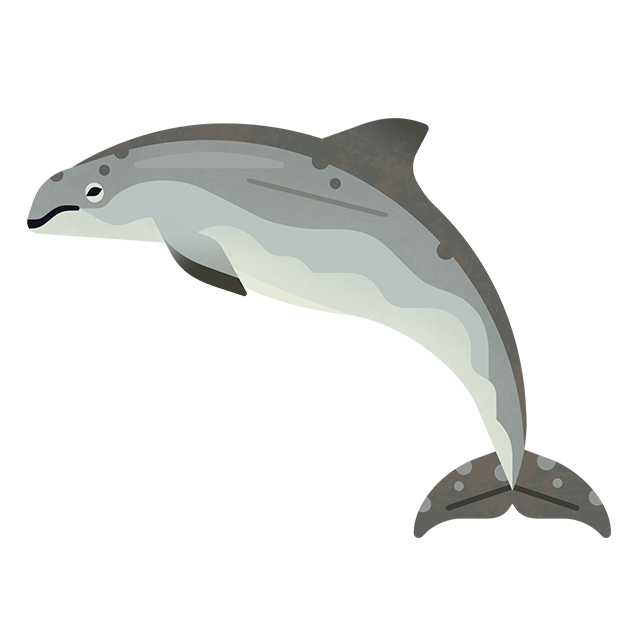
What type of whale species can be spotted in UK waters?
With a surge of humpback whale sightings in January and February, and World Whale Day on Sunday 16th February, let’s take a closer look at some of the incredible types of whaless that visit our waters.
Whales are some of the most majestic and awe-inspiring creatures on Earth. And we have more in common than you might think. Just like us, they’re mammals, meaning they breathe air and nurse their young with milk. Some species even display culture and emotion - such as orcas seen wearing salmon as "hats" or whales appearing to grieve for family members. Highly intelligent, they use clicks and sounds to communicate, navigate, and hunt. But these incredible animals face serious threats, including vehicle collisions, overfishing, and pollution.
Alexandra Bulgakova, our Seasearch Data Analyst said: “World Whale Day serves as a timely reminder of the incredible role whales play in maintaining the health of our ocean.
It’s been a fantastic year so far for whale sightings, bringing their fragile existence into focus and highlighting the urgent need to protect them from threats like pollution and overfishing. As vital contributors to nutrient cycles and the balance of marine life, protecting whale species not only safeguards them but also benefits the wider ecosystem.
We must act now to ensure that future generations can continue to enjoy the breathtaking sight of whales in our waters, and all the benefits they bring."

A humpback whale
Credit: Clifton Hastings via Shutterstock
Humpback whale (Megaptera novaeangliae)
Humpback whales are among the most acrobatic and vocal whale species, known for their playful, surface-active behaviour and complex songs, which are some of the most intricate in the animal kingdom.
Humpbacks are part of a group of toothless whales, known as baleen whales, that feed by taking in huge mouthfuls of water and then pushing it out through comb-like baleen plates. These plates act like a sieve, trapping prey such as krill and fish inside, while water is pushed back out.
They are also one of the most well-travelled mammals, undertaking some of the longest migrations, moving from cooler northern waters in the summer to warmer tropical regions during the winter. As they make this journey south, they occasionally pass through the UK, making winter the best time to spot them, particularly between December and February. Sightings are most common in the South West of England, but they have also recently been spotted in East Sussex. There has been a surge of humpback whale sightings so far this year, suggesting their presence in UK waters may be increasing.
Minke whale (Balaenoptera acutorostrata)
Unlike many other whale species, minke whales are generally solitary, though they may gather in areas with abundant food. They are known to use a feeding technique called lunge feeding, where they accelerate through the water, open their mouths wide, and engulf large amounts of prey, before filtering out the water through their baleen plates.
A distinctive feature of minke whales found in the northern hemisphere are white "armbands" on their flippers, a trait not present in their southern peers. Their small size, agility, and curiosity often lead them to approach boats, making them a favourite among whale watchers.
Minke whales are the most commonly encountered species of baleen whale in our waters. Often seen close to shore, they are a great species for land-based whale watching. They are most frequently sighted along the West coast of Scotland, as well as the North East and South West of England, particularly in the summer months when they migrate to feed in cooler northern waters.

A sperm whale
Credit: Hugh Harrop
Sperm whale (Physeter macrocephalus)
Sperm whales are the largest toothed whales and are easily recognised by their ginormous, box-like heads, which make up nearly a third of their body length. They have the largest brain in the animal kingdom and are highly intelligent social animals that form groups of males, females, or mixed pods during the breeding season.
As one of the deepest diving marine mammals, sperm whales can descend over 1,000 meters to hunt in deep-sea trenches, feeding on deep-water fish as well as the elusive giant squid. To navigate the pitch-black depths, sperm whales use their gigantic nose to produce the most powerful sounds in the animal kingdom, which is thought to aid in long-distance communication while foraging.
In the UK, sperm whales are usually found in deeper offshore waters, meaning you’ll likely need to be out on a boat to have any chance of spotting them. Males are also more commonly sighted in the UK, as they tend to travel to cooler, more temperate waters.
Fin whale (Balaenoptera physalus)
Fin whales, the second-largest marine mammal, after the blue whale, can reach lengths of up to 80 metres - yet are surprisingly fast, earning them the nickname "greyhounds of the sea". A unique feature of fin whales is their asymmetrical lower jaw colouration, with the left side being entirely dark grey or black and the right side strikingly bright white. This trait has only been observed in one other whale species, and is thought to relate to hunting.
Fin whales have been known to migrate through UK waters in the summer, and are most commonly seen off the North coast of Scotland and the South West coast of England, where sightings peak in late summer.

A pod of orcas
Credit: Hugh Harrop
Special mention: Orca (Orcinus orca)
Orcas, often called killer whales, are actually part of the dolphin family, but we couldn’t leave out this beloved species, known for their distinctive black-and-white appearance. Orcas are highly social, often found in pods, and are famous for their acrobatic behaviour, including breaching and tail slapping.
Unfortunately, orcas face significant challenges due to chemical pollutants in our ocean, which have been detected in areas frequented by orcas. These harmful chemicals build up in their blubber, accumulating in dangerous concentrations that impact their health and ability to reproduce. A tragic example of this is the ‘West Coast Community’ known to visit Northern Scotland each year. This group has failed to produce a calf in over 20 years, highlighting the devastating impact of pollution on their future survival.
In the UK, orcas are primarily found off the West coast and in Northern Scotland, particularly around the Shetland and Orkney Islands during the early summer. However, sightings are rare, especially for the small ‘West Coast Community’, which is believed to consist of around eight individuals - making it a true stroke of luck if you spot one.



